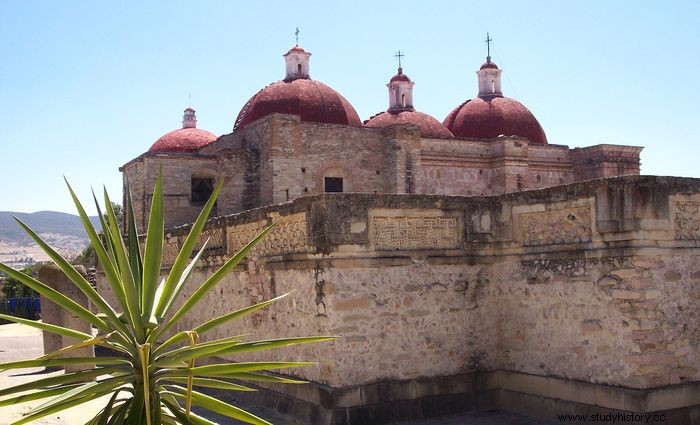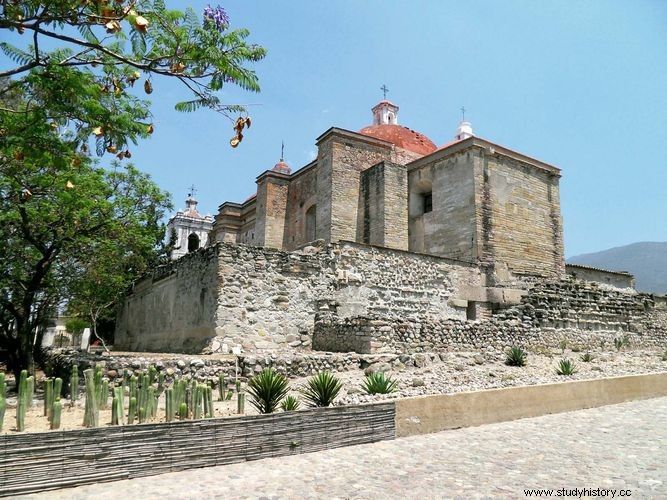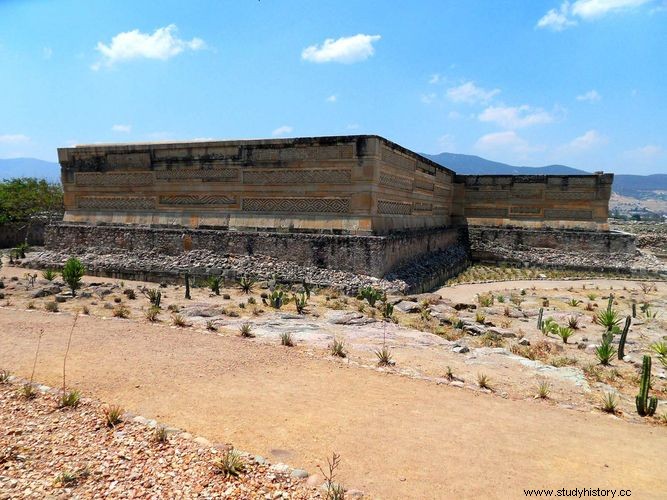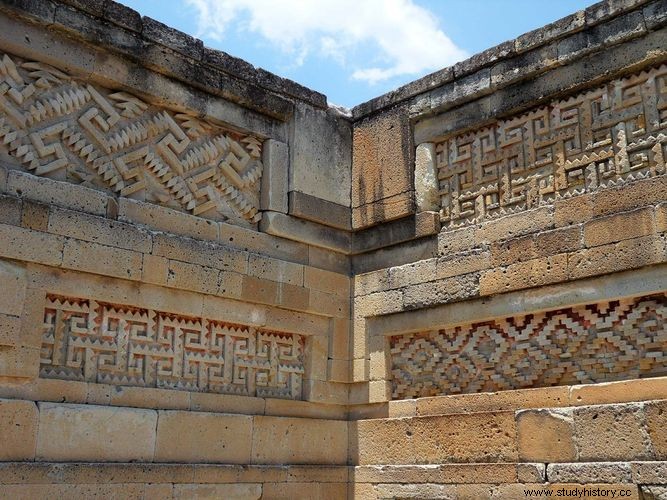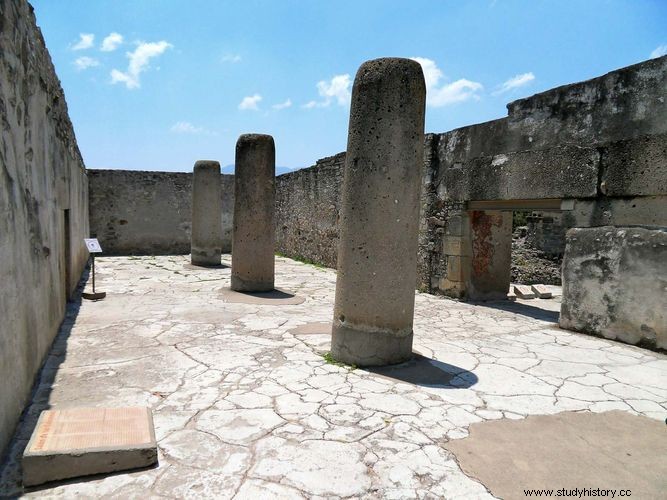Mitla , Mesoamerican archaeological site, State Oaxaca , Southern Mexico . One of Mexico's best-known ruins, Mitla sits at an elevation of 1,480 m on the eastern edge of one of several cold high valleys surrounded by the mountains of the Sierra Madre del Sur, 38 km southeast from Oaxaca city. It is generally believed that Mitla (Nahuatl:place of the dead) was established as a sacred burial site long before the Christian era, probably by the Zapotec , whose influence up about 900 n . Chr . Prevailed . Between 900 and 1500 the Mixtec descended from northern Oaxaca and took possession of Mitla; It's the Mixtec Influence most pronounced on existing ruins. The Spanish arrived in Mitla in 1521 and the first European account of the area was 1576 from Diego García de Palacio.
The archaeological zone of Mitla includes five main groups of structures - Grupo de las Columnas ( Columns Group), Grupo de las Iglesias ( Churches Group), Grupo del Arroyo (Arroyo Group), Grupo de los Adobes (Adobe Group) and Grupo del Sur (Southern Group), of which only the first two had been fully excavated and restored in the early 1980s. Each group has several rectangular courtyards (some connected by long, winding corridors and others separated) bordered by long, narrow rooms. The courtyards of Grupo de los Adobes and Grupo del Sur are also bordered by rooms and stepped pyramids.
The method of above-ground wall construction seems to have been the same for all groups:a core of mud and stone covered with plaster or well cut Trachyte . The door frames are adorned with mosaics of intricately worked small stones that fit perfectly into (geometric) tiered patterns. Cruciform lithic tombs have been discovered beneath both Grupo de las Columnas and Grupo del Sur.
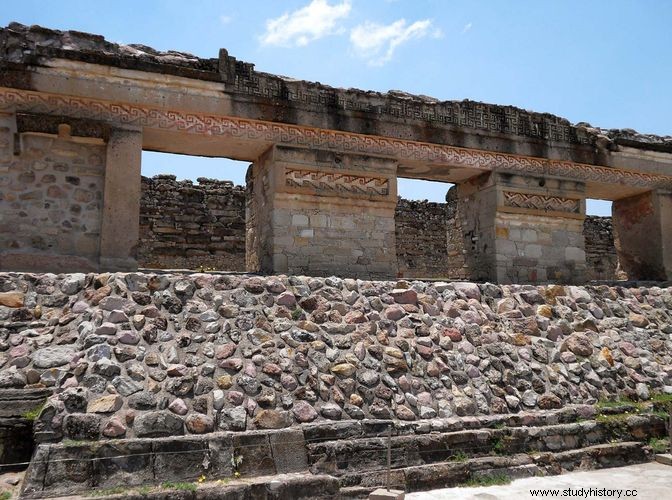
Composed mostly of thatched huts and mud houses on the hillside below the ruins, the modern village of Mitla is the base of operations for the Regional Studies Center of the Universidad de las Americas. The Museo Frissell de Arte Zapoteca (Frissell Museum) located in the village contains a collection of artifacts from the state of Oaxaca.

